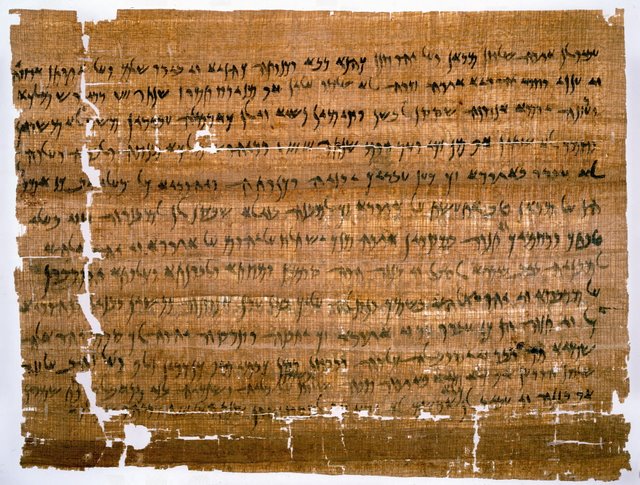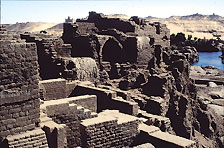The Elephantine Temple, 407 BCE
A Temple to Israel’s God in Egypt
Now our forefathers built this temple in the fortress of Elephantine back in the days of the kingdom of Egypt, and when Cambyses came to Egypt he found it built. They (the Persians) knocked down all the temples of the gods of Egypt, but no one did any damage to this temple.
Date- 407 BCE
Current Location- Staatliche Museen zu Berlin, Berlin, Germany (P. 13495)
Language and Script- Aramaic; alphabetic
Biblical Verses- 2 Kings 25-26; Deuteronomy 12
General Information-
The Elephantine papyri, which include letters, business contracts, and literary texts, document the daily life of a Jewish military colony in southern Egypt. The papyri, written in Aramaic, date to the 5th century BCE, when the Persian Empire dominated the Ancient Near East. In this particular text, we learn a great deal about the relationships of the Jewish community in Elephantine (Yeb in Aramaic) with their Egyptian neighbors and Persian rulers. The papyrus contains a letter from Yedaniah ben Gemariah, the community’s leader, to the Persian governor in Yehud (Judah). Yedaniah requests permission to rebuild his community’s temple, which had been destroyed by a group of Egyptian priests in league with the local Persian administrator. Amazingly, we discover in this letter that the Jewish community and temple had already been established at Elephantine long before the Persians established hegemony over Egypt under Cambyses in 525 BCE (compare with 2 Kings 25-26). Even more confounding is the fact that the community had its own temple, where sacrifices were offered to the Israelite deity. This raises significant questions about the nature of Jewish worship during this period since it seems to be in opposition to biblical law (Deuteronomy 12). The Torah bans sacrificial ritual at sites other than the one place “where God chooses to establish his name,” an ambiguous term that literally points to the mobile Tabernacle but surely includes the Temple in Jerusalem, which was the religious capital at the time. In contrast, the Elephantine community offered the full range of animal sacrifices, grain offerings, and incense offerings at their temple! To complicate matters even further, we have a later document from the same archive that states that permission to rebuild the Elephantine temple had been granted by the religious authorities in Israel, along with permission to perform grain and incense offerings; mention of animal sacrifice, however, is conspicuously absent.
Circumstances of Discovery and Acquisition- Papyri from Elephantine first began to surface in the early 19th century as collectors acquired fragments of papyri from all around Egypt. A small number of fragments appeared over the course of several decades until the beginning of the 20th century. Teams of French and German archaeologists conducted excavations at Elephantine in the hopes of finding more textual material, and in 1907–1908 Otto Rubensohn and Friedrich Zucker struck gold. They discovered numerous Greek, Demotic, and Aramaic papyri, including the communal archive of Yedaniah ben Gemariah, in which this letter was kept. The contents of this archive were published by Eduard Sachau in 1911.
See also-






